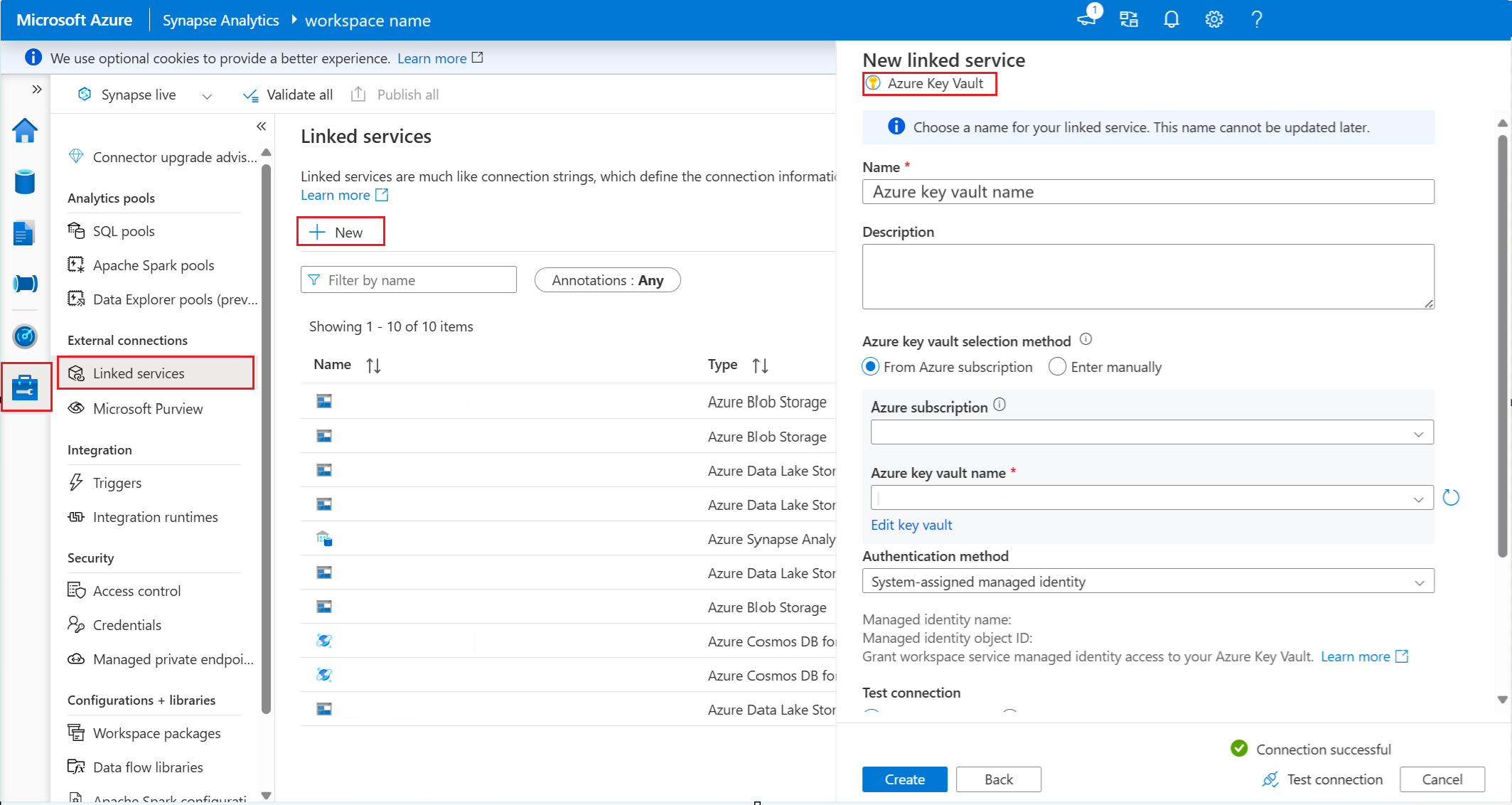Note
Access to this page requires authorization. You can try signing in or changing directories.
Access to this page requires authorization. You can try changing directories.
The Apache Spark diagnostic emitter extension is a library that allows Spark applications to send logs, event logs, and metrics to destinations like Azure Event Hubs, Azure Log Analytics, and Azure Storage.
In this tutorial, you learn how to create required Azure resources and configure a Spark application with a certificate and service principal to emit logs, event logs, and metrics to Azure Event Hubs using the Apache Spark diagnostic emitter extension.
Prerequisites
- An Azure subscription. You can also create a free account before you get started.
- Synapse Analytics workspace.
- Azure Event Hubs.
- Azure Key Vault
- App Registration
Note
To complete this tutorial's steps, you need to have access to a resource group for which you're assigned the Owner role.
Step 1. Register an application
Sign in to the Azure portal and go to App registrations.
Create a new app registration for your Synapse workspace.

Step 2. Generate a certificate in Key Vault
Navigate to Key Vault.
Expand the Object, and select the Certificates.
Click on Generate/Import.

Step 3. Trust the certificate in the application
Go to the app created in Step 1 -> Manage -> Manifest.
Append the certificate details to the manifest file to establish trust.
"trustedCertificateSubjects": [ { "authorityId": "00000000-0000-0000-0000-000000000001", "subjectName": "Your-Subject-of-Certificate", "revokedCertificateIdentifiers": [] } ]
Step 4. Assign Azure Event Hubs Data Sender Role
In Azure Event Hubs, navigate to Access control (IAM).
Assign the Azure Event Hubs data sender role to the application (service principal).

Step 5. Create a linked service in Synapse
In Synapse Analytics workspace, go to Manage -> linked service.
Create a new linked Service in Synapse to connect to Key Vault.

Step 6. Assign reader role to linked service in Key Vault
Get the workspace managed identity ID from the linked service. The managed identity name and object ID for the linked service is under Edit linked service.

In Key Vault, assign the linked service a Reader role.
Step 7. Configure with a linked service
Gather the following values and add to the Apache Spark configuration.
- <EMITTER_NAME>: The name for the emmiter.
- <CERTIFICATE_NAME>: The certificate name that you generated in the key vault.
- <LINKED_SERVICE_NAME>: The Azure Key vault linked service name.
- <EVENT_HUB_HOST_NAME>: The Azure Event Hubs host name, you can find it in Azure Event Hubs Namespace -> Overview -> Host name.
- <SERVICE_PRINCIPAL_TENANT_ID>: The service principal tenant ID, you can find it in App registrations -> your app name -> Overview -> Directory (tenant) ID
- <SERVICE_PRINCIPAL_CLIENT_ID>: The service principal client ID, you can find it in registrations -> your app name -> Overview -> Application(client) ID
- <EVENT_HUB_ENTITY_PATH>: The Azure Event Hubs entity path, you can find it in Azure Event Hubs Namespace -> Overview -> Host name.
"spark.synapse.diagnostic.emitters": <EMITTER_NAME>,
"spark.synapse.diagnostic.emitter.<EMITTER_NAME>.type": "AzureEventHub",
"spark.synapse.diagnostic.emitter.<EMITTER_NAME>.categories": "DriverLog,ExecutorLog,EventLog,Metrics",
"spark.synapse.diagnostic.emitter.<EMITTER_NAME>.certificate.keyVault.certificateName": <CERTIFICATE_NAME>",
"spark.synapse.diagnostic.emitter.<EMITTER_NAME>.certificate.keyVault.linkedService": <LINKED_SERVICE_NAME>,
"spark.synapse.diagnostic.emitter.<EMITTER_NAME>.hostName": <EVENT_HUB_HOST_NAME>,
"spark.synapse.diagnostic.emitter.<EMITTER_NAME>.tenantId": <SERVICE_PRINCIPAL_TENANT_ID>,
"spark.synapse.diagnostic.emitter.<EMITTER_NAME>.clientId": <SERVICE_PRINCIPAL_CLIENT_ID>,
"spark.synapse.diagnostic.emitter.<EMITTER_NAME>.entityPath": <EVENT_HUB_ENTITY_PATH>
Step 8. Submit an Apache Spark application and view the logs and metrics
You can use the Apache Log4j library to write custom logs.
Example for Scala:
%%spark
val logger = org.apache.log4j.LogManager.getLogger("com.contoso.LoggerExample")
logger.info("info message")
logger.warn("warn message")
logger.error("error message")
//log exception
try {
1/0
} catch {
case e:Exception =>logger.warn("Exception", e)
}
// run job for task level metrics
val data = sc.parallelize(Seq(1,2,3,4)).toDF().count()
Example for PySpark:
%%pyspark
logger = sc._jvm.org.apache.log4j.LogManager.getLogger("com.contoso.PythonLoggerExample")
logger.info("info message")
logger.warn("warn message")
logger.error("error message")